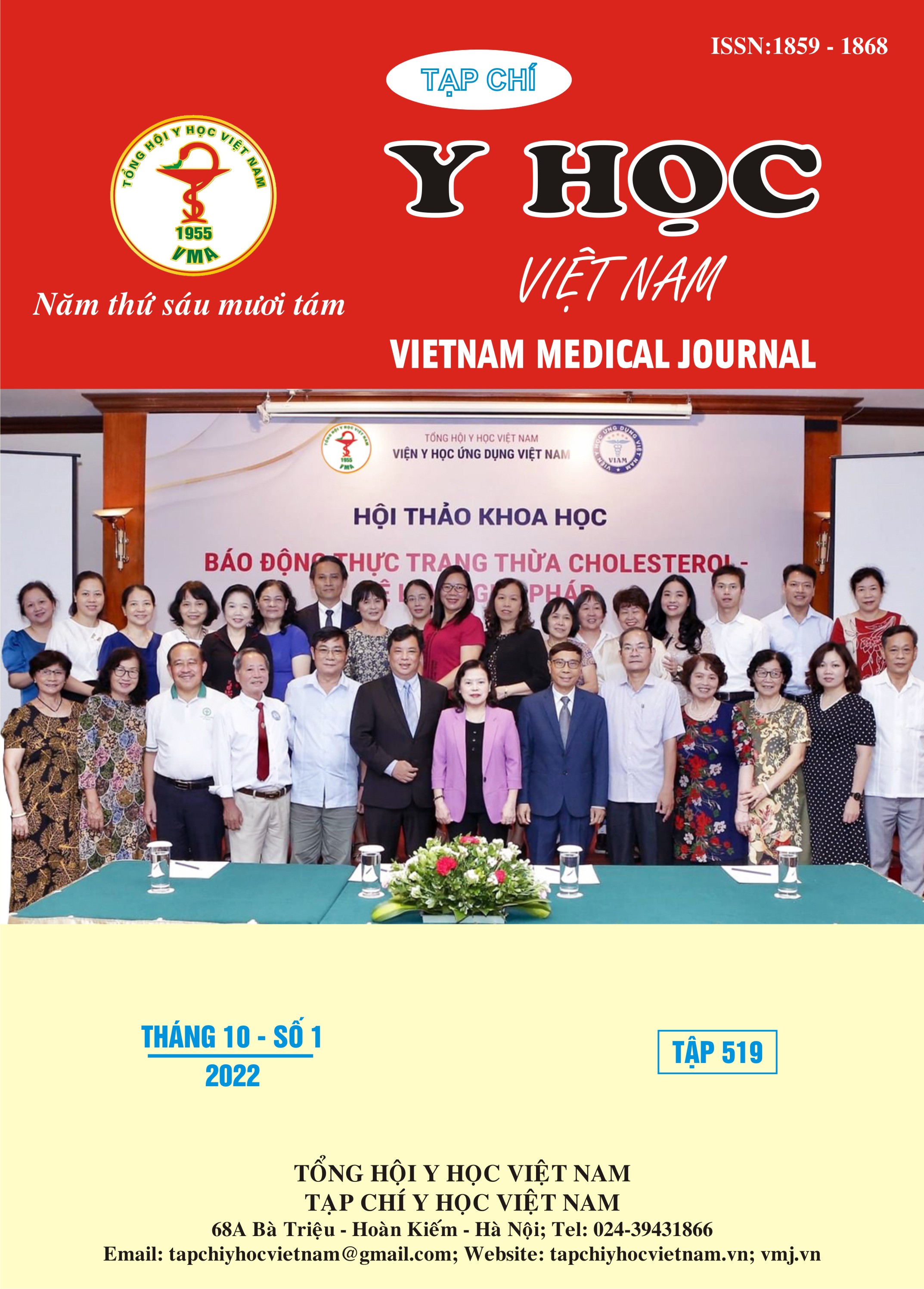VITAMIN D DEFICIENCY IN PRETERM INFANTS AT THE NATIONAL HOSPITAL OF PEDIATRICS
Main Article Content
Abstract
Objectives: This study aimed to describe clinical and subclinical characteristics and evaluate some factors related to vitamin D deficiency in preterm infants. Subjects and Method: A prospective, cross-sectional descriptive study. The serum concentrations of 25-(OH)D were measured from the blood of 132 preterm infants (<32 weeks of gestation) at 3-4 weeks of post-conceptional age at the National Hospital of Pediatrics from July 1, 2021, to July 31, 2022. All patients in the present study were divided into 2 groups: vitamin D sufficiency (serum 25-(OH)D concentrations ≥50nmol/l) and vitamin D insufficiency (serum 25-(OH)Dconcentrations <50nmol/l). Results: The percentage of vitamin D insufficiency was 54.5%. There were differences in the concentrations of serum calcium, phosphorous, magnesium, and alkaline phosphatase (ALP) between the two groups. The gestational age was not significantly correlated to vitamin D insufficiency. The serum 25-(OH)D concentrations were significantly lower in the infants with abnormal maternal history, fungal infections, dysplasia, gastrointestinal problems, and hypothyroidism. Conclusion: The prevalence of vitamin D insufficiency in preterm infants is relatively high. Diseases of mothers during pregnancy, fungal infections, dysplasia, gastrointestinal problems, and hypothyroidism increase the risk of vitamin D deficiency.
Article Details
Keywords
Vitamin D deficiency, preterm infants, 25- hydroxyvitamin D
References
2. Cho SY, Park HK, Lee HJ. Efficacy and safety of early supplementation with 800 IU of vitamin D in very preterm infants followed by underlying levels of vitamin D at birth. Italian Journal of Pediatrics. 2017;43(1):45.
3. Saraf R, Morton SMB, Camargo CA, Grant CC. Global summary of maternal and newborn vitamin D status – a systematic review. Matern Child Nutr. 2015;12(4):647-668.
4. Oktaria V, Graham SM, Triasih R, et al. The prevalence and determinants of vitamin D deficiency in Indonesian infants at birth and six months of age. PLoS One. 2020;15(10):e0239603.
5. Burris HH, Van Marter LJ, McElrath TF, et al. Vitamin D status among preterm and full-term infants at birth. Pediatr Res. 2014;75(1-1):75-80.
6. Lykkedegn S, Sorensen GL, Beck-Nielsen SS, Christesen HT. The impact of vitamin D on fetal and neonatal lung maturation. A systematic review. Am J Physiol Lung Cell Mol Physiol. 2015;308(7):L587-602.
7. Çetinkaya M, Çekmez F, Erener-Ercan T, et al. Maternal/neonatal vitamin D deficiency: a risk factor for bronchopulmonary dysplasia in preterms? J Perinatol. 2015;35(10):813-817.
8. Park HW, Lim G, Park YM, Chang M, Son JS, Lee R. Association between vitamin D level and bronchopulmonary dysplasia: A systematic review and meta-analysis. PLoS One. 2020; 15(7): e0235332.


